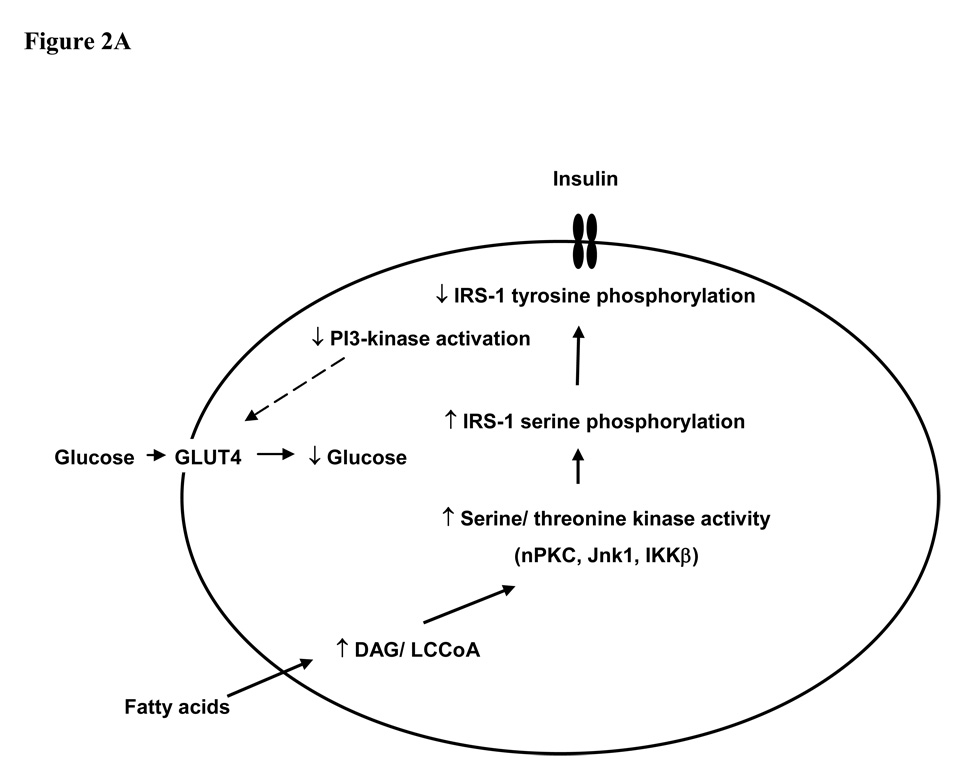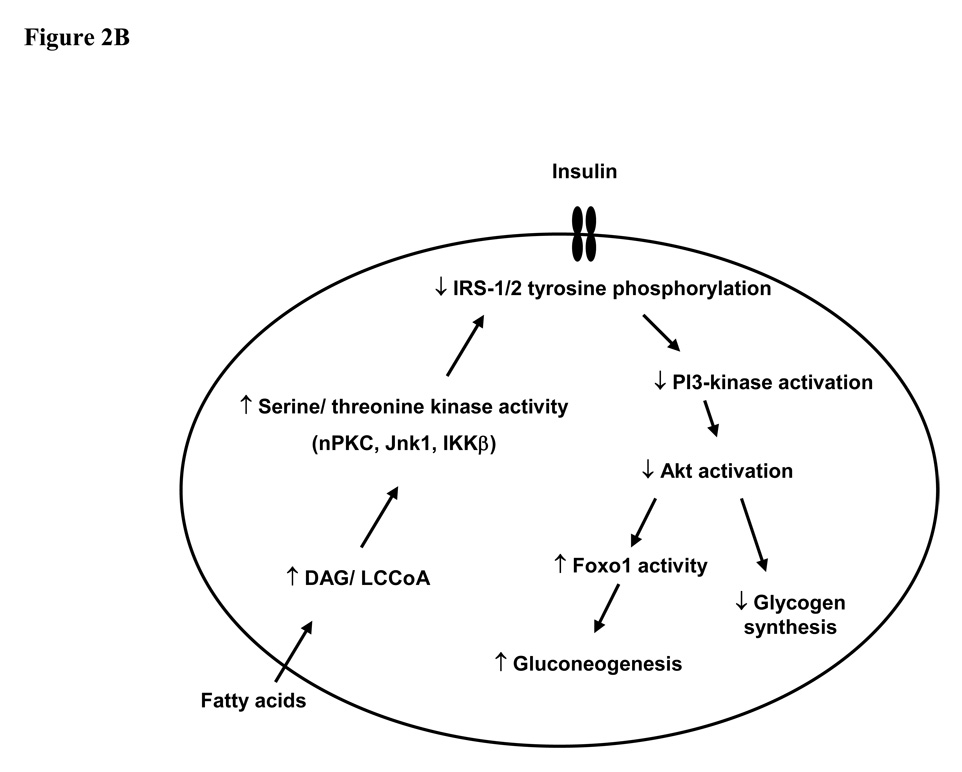Figure 2. Mechanism of fatty acid induced insulin resistance in muscle (A) and liver (B).
Fatty acid metabolites (LCCoA, DAG), which may accumulate within myotubules and hepatocytes due to increased fatty acid delivery and/ or decreased mitochondrial oxidation, trigger a serine/threonine kinase cascade (possibly involving nPKC, IKKβ and/ or JNK-1). This ultimately induces serine/ threonine phosphorylation of critical IRS-1 sites (at least in muscle), thereby inhibiting IRS-1/2 tyrosine phosphorylation and activation of PI 3-kinase, resulting in i) reduced insulin–stimulated glucose transport in muscle; and ii) reduced glycogen synthesis and increased gluconeogenesis in liver. GLUT4, glucose transporter 4; LCCoA, long chain acylcoenzymeA; DAG, diacylglycerol; IRS, insulin receptor substrate; PI3-kinase, phosphoinositol 3-kinase; nPKCs, novel protein kinase Cs; JNK-1, Jun kinase-1; IKK β; IκB kinase-β.


